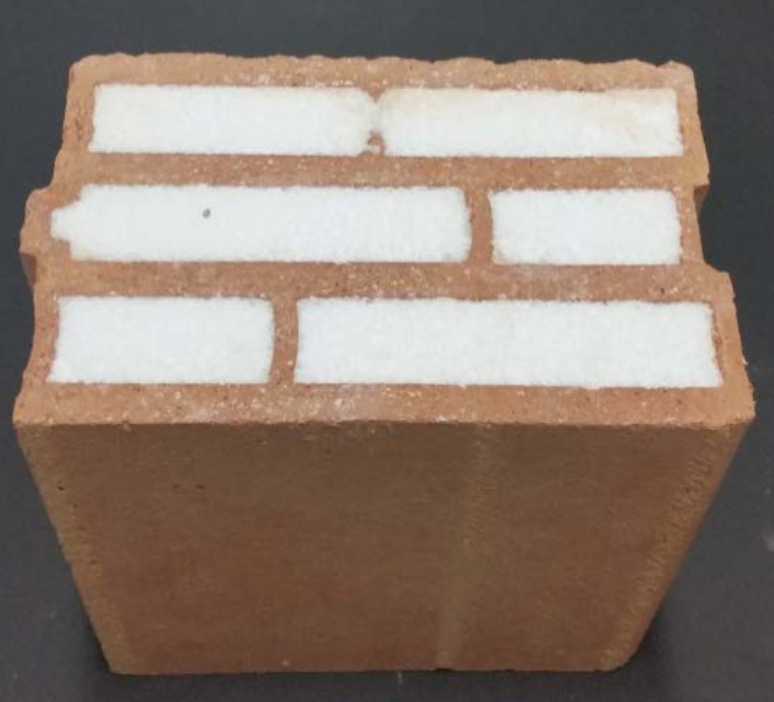Researchers from the Swiss Federal Laboratories for Materials Science and Technology (Empa) have discovered that the insulating properties of state-of-the-art insulating bricks can be significantly enhanced by replacing the filling material with silica aerogel granules.
Commercially available insulating bricks (shown in the figure below), which unite structural and insulating functions in one component, are composed of a rigid clay or concrete shell in which the cavities are filled with an insulating material (e.g. mineral wool, PU foam). While their simplicity makes these monoliths, in theory, an ideal building material, their inferior insulating performance compared to a layered approach (i.e. layering different materials for structural and insulating purposes on top of each other), has limited the application of insulating bricks in the building sector.
However, simulations and measurements showed that by replacing the filling material with silica aerogel the thermal conductivity of the insulating brick can be significantly reduced (> 30 %), yielding a higher insulating performance for a given brick thickness. Accordingly, this facilitates the construction of thinner insulating walls, which is crucial in locations where space-saving architecture is required (e.g. dense urban locations).
Due to the cost of aerogels, the “Aerobrick” is not an economically viable solution today. Nonetheless, the authors conclude that the projected future drop in aerogel prices will potentially transform aerogel-filled insulating bricks into a strong alternative to layered insulating techniques in the near future.
More details: Jannis Wernery, Avner Ben-Ishai, Bruno Binder, Samuel Brunner; Aerobrick – An aerogel-filled insulating brick, Energy Procedia Volume 134, October 2017, Pages 490–498 https://doi.org/10.1016/j.egypro.2017.09.607

 Image of “Aerobrick” — Insulating brick with silica aerogel granule filling.
Image of “Aerobrick” — Insulating brick with silica aerogel granule filling.